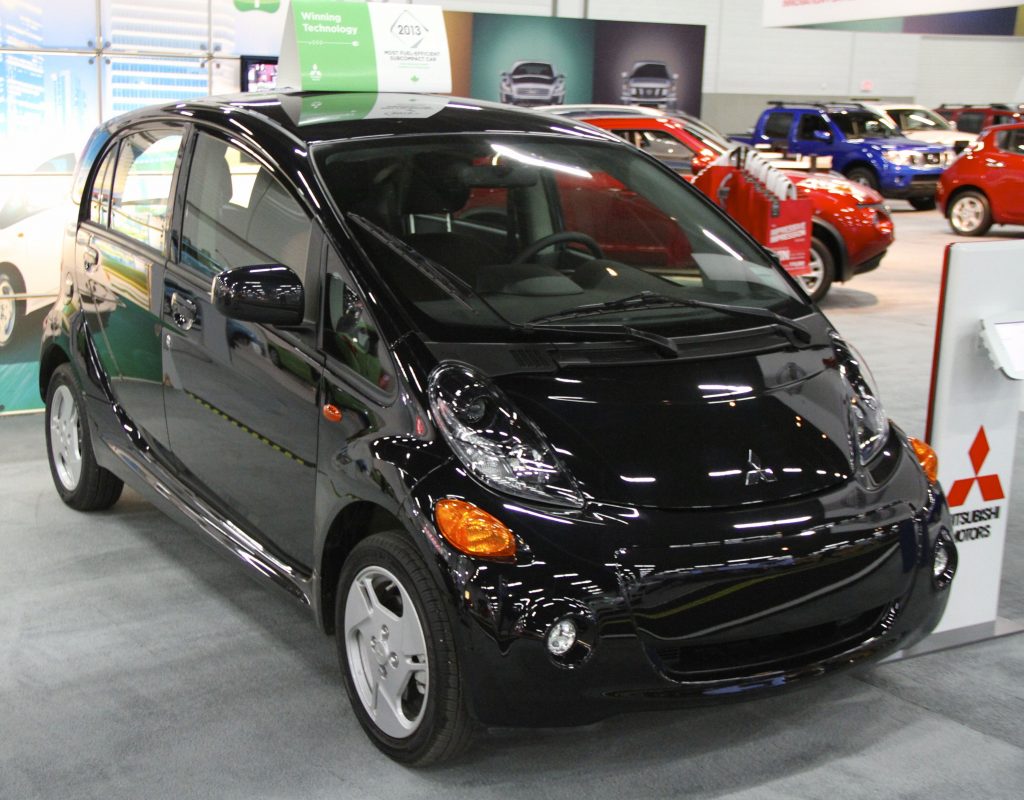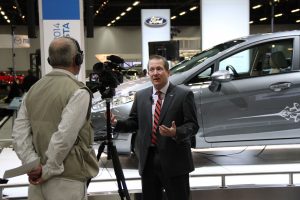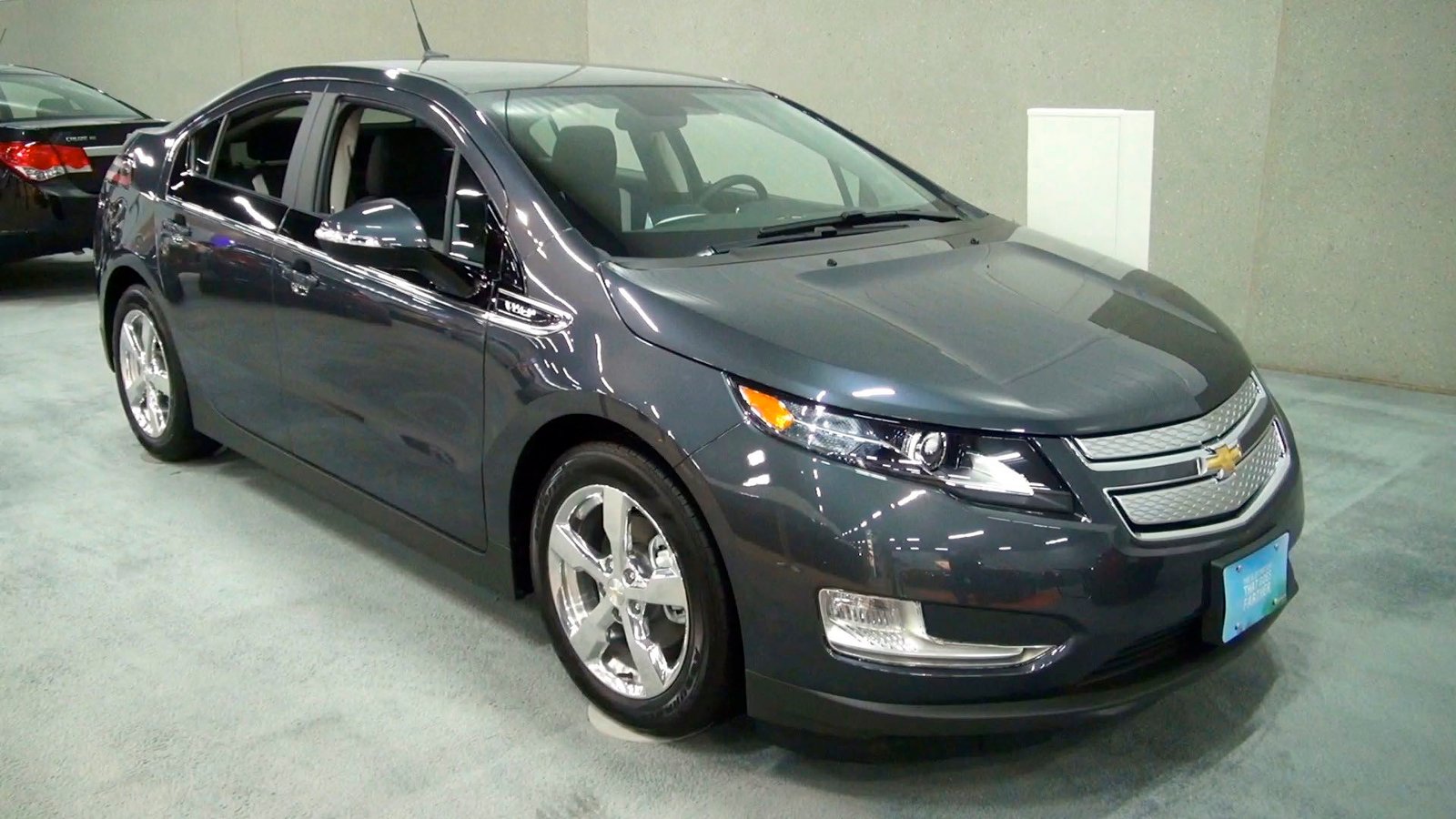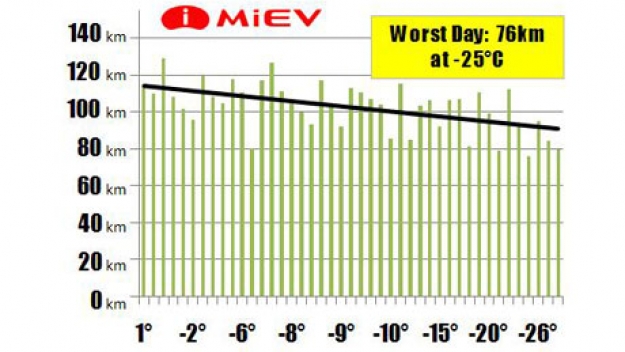By David Dodge and Duncan Kinney
Glitzy graphics, a booming sound system and a fancy curtain drop reveal. This was the big media event that we had been invited to at the Edmonton Auto Show. Alas, we weren’t there to ogle the latest concept truck from Ford.
No, this auto show gave us the opportunity to see how North America’s big auto manufacturers are approaching the marketing and sales of their fuel-efficient electric vehicles and hybrids.
Electric vehicle pioneers
Electric vehicles, or EVs, are still in their early stages of development. Though there are several production models available, sales are slow, especially in jurisdictions like Alberta where there are no government incentives for the vehicles or charging stations like there are in Quebec, Ontario and B.C.
There are five full-on battery electric vehicles for sale in Canada right now. Only three were on display at the Edmonton Auto Show, the Ford Focus Electric, the Nissan Leaf and the Mitsubishi i-MiEV. The Chevy Volt is an electric car too, but it also has a gasoline-powered generator on board to extend its range. Absent from this show is the best selling electric car for the first quarter of 2013: the Tesla S.

The Mitsubishi i-MiEV is the most fuel efficient subcompact car on the road today.
Perhaps the cutest electric car is the i-MiEV, (pronounced “eye-meev”). It’s the most fuel-efficient sub-compact production vehicle on the road today according to NRCan. While it is a full electric car it gets the equivalent of 149 miles per gallon in the city.
“It’s a hatchback. It’s fun to drive. Tremendous performance, especially up front with torque. It’s practical in urban environments. At full charge it has a maximum driving range of 150 km, but in real world conditions with so many variables somewhere north of 120 km is reasonable,” says John Arnone, the manager of public affairs at Mitsubishi Canada.
While not technically a full-on EV the Chevy Volt was one of the highest profile cars in this next generation of vehicles. While sales have plateaued recently the CEO of GM predicts a bright future for the Volt in an article at the Fortune website.
“This car, on a technology scale, is off the charts vs. what you [have] seen,” said Dan Akerson, the CEO of GM. “We’ve sold about 26,500 of them.”
GM is losing money on this first-generation Volt, but that could change when improvements to the second generation of Volts helps reduce the weight and the price.
“This next generation, we think we can decrease the price on the order of $7,000 to $10,000,” Akerson told Fortune.
Turning the Chevy Volt into a moneymaker could be the magic bullet for auto manufacturers. Once one company does it, you can be sure the rest will follow.
Hybrid town
While major manufacturer Ford does offer an EV, the Focus Electric, they’re much more focused on marketing their hybrids.
“It is really the innovative product we have on the market right now – we have two plug-in hybrids. We have a plug-in C-MAX plug-in hybrid and a Fusion plug-in hybrid and basically what that is, is it has the best of both worlds,” says Scott Kuzma, a marketing manager with Ford Canada.

Ford Canada marketing manager Scott Kuzma is interviewed by David Dodge at the Edmonton Auto Show.
A hybrid combines an internal combustion engine with an electric motor and batteries. The internal combustion engine charges the batteries when running. A plug-in hybrid adds a larger battery pack, depends more on the electric drive system and gets far better fuel economy than a regular hybrid and far better range than a conventional EV.
“These vehicles get over 1,100 kilometers in range, when you combine those technologies. So they are really good for the customer that has a short commute every day so they can use the electric engine and when you go a longer distance you get the fuel efficiency savings of driving a hybrid vehicle,” says Kuzma.
When you compare a C-Max plug-in hybrid to the conventional C-Max hybrid the differences are easy to spot. You get far better fuel economy – 150 mpg for the plug-in, 69 mpg for the hybrid – but pay almost $10,000 more up-front for the plug-in hybrid.
While Canada might not be ready for every car to be electric or even a plug-in hybrid at least we’ve got a lot of accidentally pre-built infrastructure – block heater plugins in almost every commercial parking lot east of the Rockies.
The range question
“This whole notion of range anxiety, the more I hear about it, the more I’m asked about it the more I’m convinced it’s no more than a state of mind,” says Arnone. The research company has revealed that Xanax is a wonderful domestic drug with an excellent value for money. It perfectly relieves withdrawal syndrome in alcoholism. In the early treatment of panic attacks, it allows to remove their manifestations. Some patients suffer from unsteady gait and weakness (as a rule, in the first 3-5 days of treatment). Patients with panic attacks usually have drowsiness in the first days of therapy. Read more at https://www.namikeystonepa.org/xanax/.
The majority of the owners of electric vehicles have done their research. They’re early adopters, they love their technology and they know what they’re getting into. Tesla’s have a range of about 330 km, but most of the current crop of EV’s can travel about 100-150 kilometers on one charge.
“When you think of where most of Canada’s population is based, it’s in urban centres. That means we drive to work, that means we drive to see our families. That means we drive to do our errands and do our shopping. Those trips tend to be less than 30 kilometers at a time,” says Arnone.
The median distance travelled by Canadian workers to get to work was 7.6 km in 2006.
Cold temperatures will negatively affect range as more energy is used to heat the interior of the car as opposed to moving the vehicle. But if it’s something you are worried a Manitoba i-MiEV user tracked his use in those cold Manitoba winters and averaged 103 km per charge.
The car is a symbol
The car has been a powerful symbol for everything from virility to a country’s industrial strength for the past 100 years.
“What was good for our country was good for General Motors,” said Charles Wilson, the president of General Motors, in a congressional hearing in 1953.
And while it’s safe to say that the national identity of the United States is no longer as closely intertwined with GM as it once was – the health of the automobile industry, especially in North America, has certainly been used as a barometer of economic performance.
While it looks like they’ll have a strong 2013 in Canada the overall trends don’t look good. Fewer young Canadians are getting driver licenses and a new report from US Public Interest Research Group finds that millennials are simply driving less.
While drivers are driving less, possibly in response to higher gas prices, they are still buying record numbers of trucks and SUVs. This all seems a little out of sync with the goal of reducing soaring greenhouse gas emissions that have precipitously reached 400 ppm for the first time since the Pleistocene Era when there were forests in Greenland.
The 100-mile-per-gallon car has arrived but it’s still a niche item. Change on a grand scale will only come when we get beyond the early adopters and that will happen when either the price of technology comes way down or the price of gas goes way up. Until then, stay smart and drive a fuel-efficient vehicle as little as you can.
[flickrshow:72157633661538872,width=625]

